The toilet is one component a good home can’t do without, and many people have trouble deciding between one-piece and two-piece toilets for their home. Are you in the same position?
If you’re looking for a new toilet, you aren’t alone! We’ve found that one is ideal for homes with more adults or older people looking for an easy-to-clean and short-term toilet, and the other for homes looking for a long-term toilet on a budget.
Let’s dig in and discover this together.
TL;DR: One Piece vs Two Piece Toilet

One-Piece Toilet
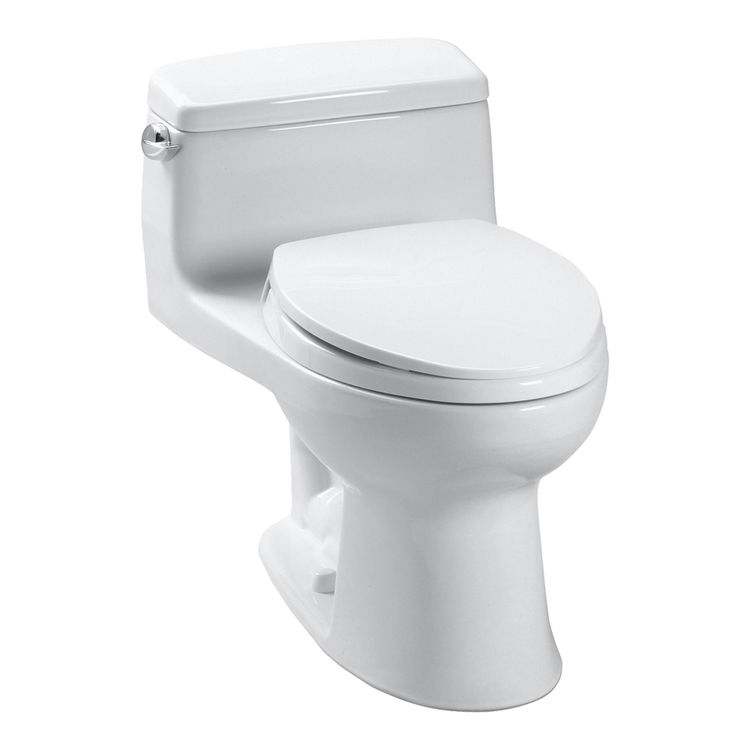
Two-Piece Toilet
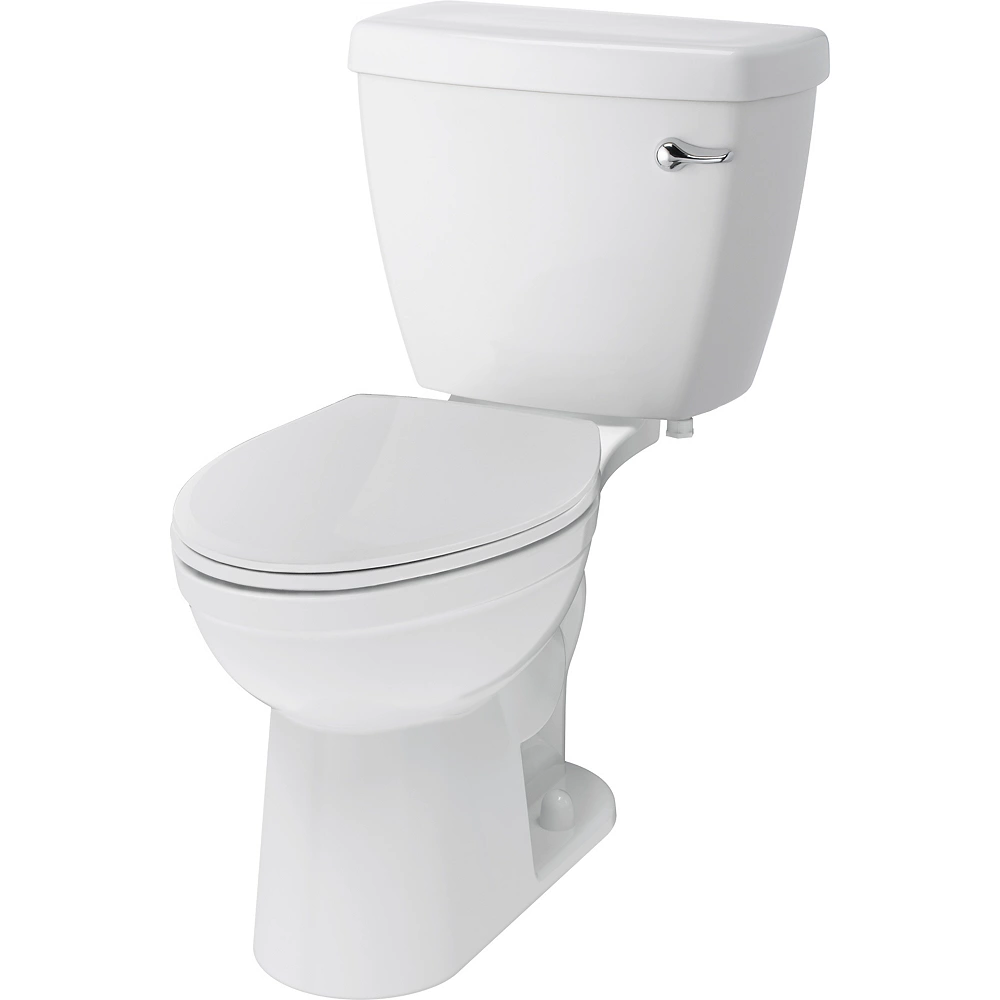
Pros
One-Piece Toilet
Easier to clean
Aesthetically pleasing
Fits better in small bathroom spaces
Requires less maintenance since it is one solid unit
Most units are comfort height models suitable for adults
Two-Piece Toilet
Cheaper than one-piece toilets
Lighter and easier to transport
More options for height and rough-in
More popular with replacement parts readily available
Multiple installation options since the tank can be wall-mounted
Cons
One-Piece Toilet
Rare to find
More expensive
Quite heavy, making transportation harder
Requires replacement of the whole unit in case of damages like breakages
Two-Piece Toilet
Less appealing aesthetically
Multiple parts make it harder to clean
Larger and takes up more bathroom space
Requires more maintenance due to interconnected parts
Best For
One-Piece Toilet
- Best for short-term usage since damages require total replacement
- Best for homes with adults and elderly people for the 17- or 19″ comfort height
Two-Piece Toilet
- Best for long-term use since parts can be replaced separately if damaged
- Best for homes with a mix of adults and younger people for the 15″ standard height
Components of a Toilet
A toilet comprises three main parts, as discussed below:
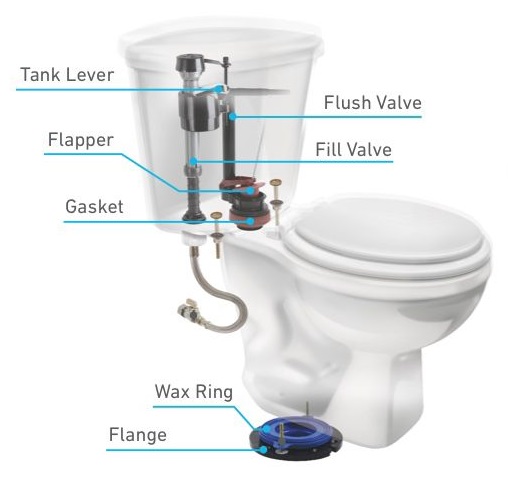
The Pedestal
This part supports the toilet bowl and ensures the toilet has an optimal height, which can be the standard 15 inches or the comfort height of 17 or 19 inches.
The pedestal is the foundation or base on which the toilet is built.
The Bowl
This part collects waste and channels it down the drainpipe once you flush the toilet.
The Tank
This reservoir holds the water for flushing to clear the waste in the toilet bowl. The toilet tank also houses the internal parts of the toilet’s flushing mechanism.
What Is a One-Piece Toilet and How Does a One-Piece Toilet Work?
A one-piece toilet is a toilet or water closet whose tank and bowl are fused into one solid unit. One-piece toilets are also called single-piece toilets.
One-piece toilets take up less bathroom space because they are smaller in size. The design of a one-piece toilet allows for a smaller size because the whole unit has been merged into one.
One key advantage of a one-piece toilet is that it is easier to clean. The seamless design means there is no space between the bowl and the tank, eliminating the hiding spots for bacteria and dust.
A one-piece toilet is the better bet if your home has more adults or older people than younger ones since most one-piece toilets come in a comfort height of 17 or 19 inches.
However, you can still find one-piece toilets with a standard height of 15 inches, more suitable for homes with younger people.
A one-piece toilet is suitable for short-term usage. The whole toilet requires replacing if it is damaged.
The main disadvantage of a one-piece toilet is that you have to replace the whole unit in case of damages like breakages. The consolation here is that they are more sturdy and will rarely get damaged.
Unlike two-piece toilets, one-piece toilets are rare to find. However, they are gaining popularity fast despite their higher cost.
One-piece toilets are heavier, weighing about 90 pounds, compared to two-piece toilets that weigh about 60 pounds per complete unit.
The higher weight of one-piece toilets makes them harder to install alone. You need extra hands to help with the lifting. However, the installation gets easy once you position the toilet well.
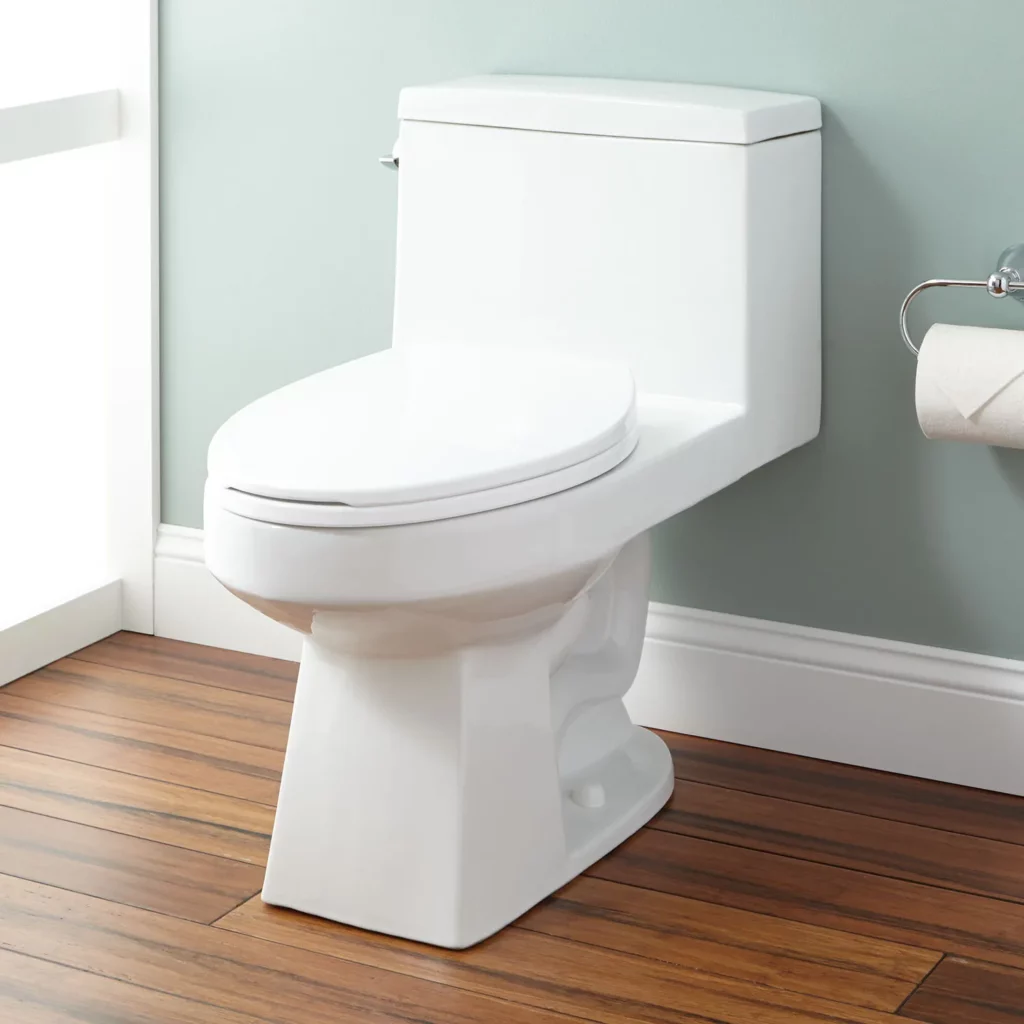
What Is a Two-Piece Toilet and How Does a Two-Piece Toilet Work?
A two-piece toilet is a toilet whose tank and bowl are separate pieces. The tank and bowl are connected with fittings to make the toilet whole and fully functional.
Two-piece toilets are also called close-coupled toilets. The whole unit weighs much less at about 60 pounds, compared to their one-piece counterparts.
Because of their lightweight nature, two-piece toilets are easier to install alone.
You only have to take care not to damage or break any of the parts. You’ll also spend more time installing a two-piece toilet.
Two-piece toilets are widely popular globally, and most of the toilets in residential and commercial places are 2-piece models. As such, their replacement parts are readily available at low costs.
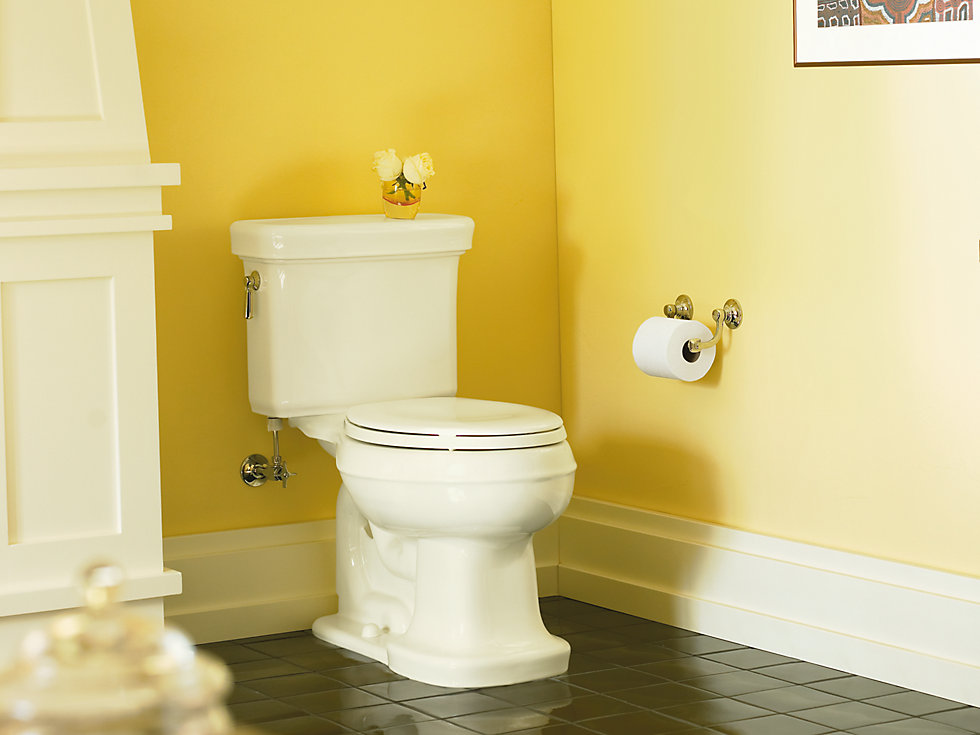
A close-coupled toilet is reasonably cheap at $150-$600, making it an ideal choice for users on tight budgets.
A two-piece toilet is suitable for long-term usage since any damaged parts can be replaced easily and at fair prices.
One key advantage of two-piece toilets is that they have more options for height and rough-in. There are both standard height and comfort height models.
The rough-in is the distance between the wall behind the toilet and the center of the drain pipe. The most common rough-in is 12 inches, but 10 and 14 inches are also available.
While you can fit either a two-piece or one-piece toilet into various rough-in measurements, you’ll have more options with two-piece toilets than one-piece models. And better still if it’s a 12-inch rough-in.
Relevant Characteristics Between One- and Two-Piece Toilets
One-Piece vs. Two-Piece Toilet
Compare by tapping or clicking below!

Size and Weight
One-Piece
Smaller size, Weighs about 90 pounds
Two-Piece
Larger size, Weighs about 60 pounds
Aesthetics
One-Piece
More aesthetically pleasing
Two-Piece
Less appealing aesthetically, some models are even ugly
Durability
One-Piece
More durable – up to 50 years, depending on usage and maintenance
Two-Piece
15 to 40 years, depending on use and maintenance
Flushing Technology and Efficiency
One-Piece
Flapper or tower flushing systems. Low-flow models are also available
Two-Piece
Flapper or tower flushing systems. Low-flow models are also available
Installation
One-Piece
Harder to install alone
Two-Piece
Easier to install alone
Repair and Replacement
One-Piece
Requires replacing the whole unit in case of damages
Two-Piece
Individual parts can be repaired or replaced independently
Cleanup and Maintenance
One-Piece
Easier to clean and maintain
Two-Piece
Harder to clean and maintain because of more parts
Upfront Cost
One-Piece
Higher purchasing costs of $400-$1200
About $100 for installation
Two-Piece
Lower purchasing costs of $150-$600
About $150 installation costs
Resale Value
One-Piece
Good home resale value if the toilet is in good condition
Two-Piece
Good home resale value if the toilet is in good condition
Similarities and Differences
Now that we know the basic aspects of one-piece and two-piece toilets, let’s shift our focus to the similarities and differences between the two types.
One-piece and Two-piece Toilet Differences
Two-piece and one-piece toilets have the following major differences:
Size and Weight
Since one-piece toilets are a whole unit carrying the tank and the bowl, they are much heavier than two-piece toilets.
A one-piece water closet weighs about 90 pounds, while a two-piece model weighs about 60 pounds as a whole.
The lightweight nature of two-piece toilets makes them easier to transport, while the higher weight of one-piece models makes them harder to ship, making them more expensive.
One-piece toilets are smaller and take up less space compared to two-piece toilets. For this reason, people with small bathrooms prefer one-piece toilets to maximize space usage.
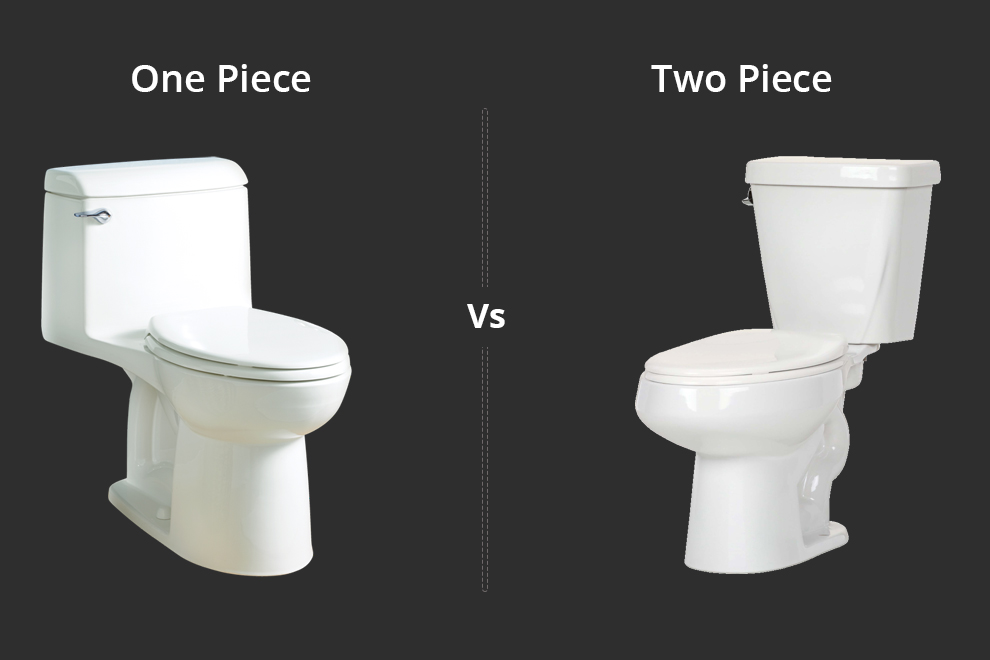
Aesthetics
The compact design in one-piece toilets makes them more aesthetically pleasing than their two-piece counterparts.
Two-piece toilets have a visible space between the tank and the bowl and unavoidable fittings to connect the two components. The space and fittings limit the aesthetic appeal.
Installation
You’ll have an easier time installing a two-piece toilet alone than a one-piece toilet. However, you’ll spend more time doing this, and you must take a lot more care not to damage any parts.
One-piece toilets are harder to install alone. You’ll need some extra hands to help with the heavy lifting. However, once you position the toilet well, the rest of the installation is easy and takes little time.
The one advantage two-piece toilets have over single-piece toilets is that they have more mounting options. Some can even be mounted on the wall.
The higher weight of one-piece toilets limits their mounting options to the floor only.
Repair and Replacement
One-piece toilets are notoriously expensive to replace. They have fewer options for repair. If the toilet fails or gets damaged, you can only replace the whole unit.
Two-piece toilets are easier to repair or replace. You can easily repair cracks on the bowl or tank. The two parts can also be bought separately for replacement at low prices.
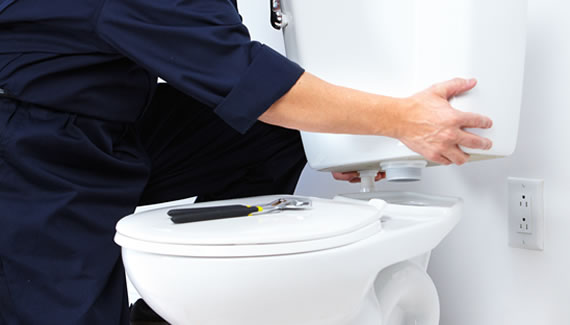
Furthermore, replacing a two-piece toilet as a whole unit is still cheaper, because these models have a lower upfront cost for both purchasing and installation.
Cleanup and Maintenance
It’s easier to clean a one-piece toilet because there are no hidden places for bacteria and dust to collect. The seamless design also makes maintenance easy.
On the other hand, two-piece toilets are harder to clean and maintain. The spaces or nooks between the tank and bowl act as dust collection and bacteria breeding spots.
Maintaining two-piece toilets is made more challenging by the multiple parts, all of which have to be checked regularly for damages. Small parts like O-rings and gaskets deteriorate easily and require routine replacements.
Upfront Cost
A one-piece toilet costs more upfront. The higher weight and sleek, seamless design contribute to the higher upfront cost. Installation costs about $100, depending on the plumber.
A two-piece toilet costs much less upfront. The installation cost is about $150.
One Piece and Two Piece Toilet Similarities
The following similarities are notable between one-piece and two-piece toilets.
Durability
While it’s true that one-piece toilets have fewer parts and are more durable than two-piece toilets, the question of durability usually boils down to maintenance and usage differences.
Ideally, both models can last over 40 years of regular use, provided they are well maintained.
Flushing Technology and Efficiency
Both one-piece and two-piece toilets have the same flushing systems and levels of efficiency. The flushing mechanisms can either be flappers or tower systems.
You can find models with low-flow flushing systems that use even less than one gallon of water per flush in both types.
Resale Value
It’s improbable that you will ever need to resell a used toilet on its own. Rather, you would be reselling a home.

Provided the toilet is in good condition, the home resale value will still be good, regardless of whether you have installed one-piece or two-piece toilets.
Bottom Line
It doesn’t have to be hard deciding between one-piece and two-piece toilets. Each type has its advantages and shortcomings, all of which you must put into consideration.
One-piece toilets are better for their ease of cleaning, more durability, fewer maintenance requirements, and better aesthetics.
However, with one-piece toilets, you’ll have to grapple with higher upfront and replacement costs, harder installation if you do so alone.
You should go for one-piece toilets if your home has more older people or adults.
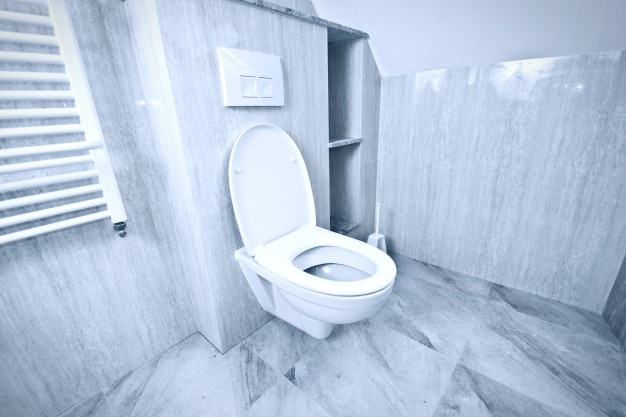
On the other hand, two-piece toilets are a better option for their low upfront cost, ease of repair and replacements, lightweight nature, and ease of installation when doing it alone.
However, with two-piece toilets, you’ll have to grapple with harder cleaning, lower durability, poor aesthetics, and repeat maintenance practices.
You can opt for two-piece toilets if you are on a tight budget but need a long-term toilet with readily available replacement parts.
People Also Ask
We have so far covered the major aspects around one-piece and two-piece toilets. We hope that you have learned a great deal. If you still have questions, see if they have been answered below.
You can replace a two-piece toilet with a one-piece toilet, provided you match the measurements and rough-in. The one shortcoming is that you might be largely limited in the rough-in options available.
One-piece toilets aren’t difficult to repair. Simple repair needs like cracks can be done without the help of a plumber, but you have to replace the whole unit rather than repair it if it is badly damaged.
A one-piece toilet is more expensive than a two-piece model because of two major reasons. First, the extra weight poses shipping difficulties, making transportation costs rise.
Second, one-piece toilets have a more unique design that results in a seamless toilet that is more aesthetically appealing.
Although one-piece toilets are generally better than two-piece toilets, each type has its own merits and demerits that should be considered for varying situations among different users.
Choosing one over the other boils down to personal preferences, needs, and the budget at hand. Be sure to pick the type that will best fulfill your needs at your current budget.
